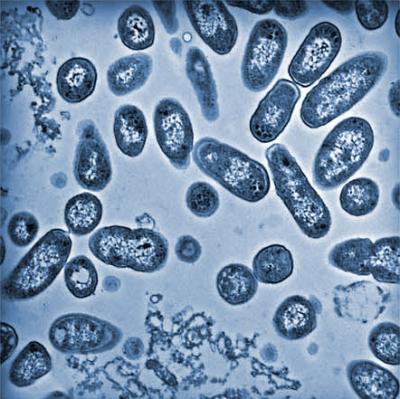
|
 |
An infectious agent of deception, exposed through proteomics
Oct 1, 2006 - 10:56:00 PM, Reviewed by: Dr. Priya Saxena
|
|
Drug and vaccine designers armed with this mouse-model information can target chemicals or immune responses that disrupt peptidoglycan synthesis and other processes linked to Salmonella's colonization of macrophages in humans, said Joshua Adkins, a co-author on Shi's paper and lead author of a related study in Molecular & Cellular Proteomics last month. A quick identification of these proteins, Adkins added, could help physicians assess the virulence of a given strain.
|
By Pacific Northwest National Laboratory,
Salmonella bacteria, infamous for food poisoning that kills hundreds of thousands worldwide, infect by stealth. They slip unnoticed into and multiply inside macrophages, the very immune system cells the body relies on to seek and destroy invading microbes.
Just how Salmonella escapes detection by macrophages, turning predator cells to prey complicit in promoting infection, has seemed impossibly complicated, a needle-in-a-haystack proposition involving thousands of proteins, the building blocks that carry out cells' vital functions.
Applying the high-volume sorting and analytical power of proteomics--a detailed survey of microbial proteins present in the 24 hours that follow mouse-macrophage infection--a team led by Liang Shi of the Department of Energy's Pacific Northwest National Laboratory has turned up a suspect protein.
 |
| PNNL scientists have identified a protein in Salmonella bacteria that enables it to infect immune cells called macrophages. Seen here: Salmonella, isolated from infected macrophrages. (Mildly color-enhanced. Photo credit: Pacific Northwest National Laboratory.) |
The discovery of the protein, dubbed STM3117, is detailed today (Sept. 29) in The Journal of Biological Chemistry. Knocking out the gene that codes for STM3117, the researchers subsequently crippled the microbe's ability to multiply inside macrophages. Shi and colleagues say the protein and two closely related proteins discovered in the study are similar in genetic sequence to those known to make and modify chemicals in the microbe's cell wall called peptidoglycan.
Drug and vaccine designers armed with this mouse-model information can target chemicals or immune responses that disrupt peptidoglycan synthesis and other processes linked to Salmonella's colonization of macrophages in humans, said Joshua Adkins, a co-author on Shi's paper and lead author of a related study in Molecular & Cellular Proteomics last month. A quick identification of these proteins, Adkins added, could help physicians assess the virulence of a given strain.
The candidate proteins were winnowed from among 315 possibilities that emerged through a combination of techniques, culminating in measurements by Fourier-transform mass spectrometry, or FT-MS. A suite of FT-MS instruments customized by co-author and PNNL-based Battelle Fellow Richard D. Smith enabled the team to rapidly separate and identify many proteins at once even as macrophages were being infected.
Most of the initial candidates were designated "house-keeping" proteins, or those whose numbers relative to other proteins remained more or less constant during the course of infection. But 39 proteins shot up in number during bacterial colonization of macrophages, and of those, a handful or so--including STM3117--responded specifically to a macrophage protein associated with resistance to microbial infection. A standard assay called Western blot confirmed the abundance increases of that small group of proteins during infection. 
- The discovery of the protein, dubbed STM3117, is detailed today (Sept. 29) in The Journal of Biological Chemistry.
www.pnl.gov
The work was funded by PNNL and the National Institutes of Health's National Institute of Allergy and Infectious Diseases, and much of the work was performed at the PNNL-based W.R. Wiley Environmental Molecular Sciences Laboratory.
PNNL is a DOE Office of Science laboratory that solves complex problems in energy, national security, the environment and life sciences by advancing the understanding of physics, chemistry, biology and computation. PNNL employs 4,200 staff, has a $725 million annual budget, and has been managed by Ohio-based Battelle since the lab's inception in 1965.
|
For any corrections of factual information, to contact the editors or to send
any medical news or health news press releases, use
feedback form
Top of Page
|
|
|
|